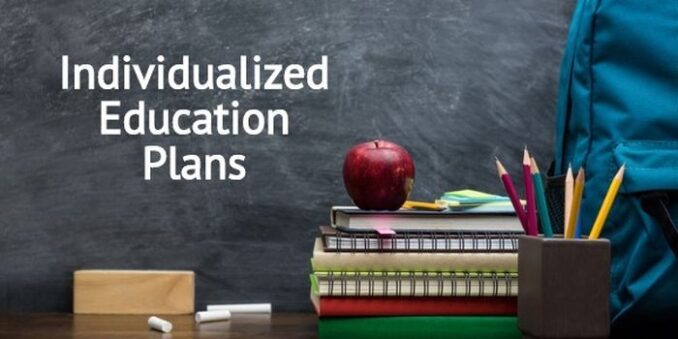If you can read this article, it’s likely because you had a supportive team of educators who met your specific learning needs during your formative years. For many dyslexic children, this is not always the case. Children with dyslexia benefit from special tools, accommodations, and individualized instruction to learn the skills necessary to succeed.
If you are a parent whose child has had a recent dyslexia evaluation, finding services can be overwhelming. Is dyslexia included under special education law? What do you need to do to advocate for services and support for your child?
If you’re navigating life with a new diagnosis, you don’t need to do it alone. Read on to learn about where dyslexic kids fit into special education law, and how special education programs can serve their needs. If you would like to learn more information about dyslexia schools, click here to learn more.
Dyslexia and Special Education Law

Source:tea.texas.gov
The place to look for more information about where dyslexia fits into special education law is the Individuals with Disabilities Education Improvement Act, also called IDEA. This is the name for federal special education law. It dictates when the term “dyslexia” or “dyslexic” may appear in IEP documents, evaluations, or other eligibility determinations.
According to IDEA, all students with disabilities must receive a Free and Appropriate Public Education. Their education needs to address the specific needs of each student. Legally, schools cannot charge you for these services, though you may need to advocate for your child to receive them.
For the purposes of IDEA, dyslexia counts as a “specific learning disability,” or SDL. A specific learning disability refers to any disorder that leads to issues processing language, including both reading and writing. This means that, according to federal law, the term dyslexia can appear as part of all special education documents, and dyslexic students may receive special education services under IDEA.
Formal Diagnosis
To use an SDL designation to receive services, you will require a formal diagnosis or identification. The first step is an evaluation. Under federal law, parents may request an initial evaluation at any time.
You will want formal documentation of these findings from a psychologist or certified special educator. Your child’s determination of eligibility will be predominantly based on these findings. Schools will not move onto the IEP, or Individualized Education Plan, phase of the process without this data.
If your initial evaluation does not conclusively lead to a dyslexia diagnosis, you may wish to pursue a private evaluation. It is your job as a parent to advocate for your child. If you believe that your child is dyslexic, private evaluation is the right next step to take.

Source:dyslexiahelp.umich.edu
Documentation
Subsequently, to qualify for an IEP, you will most likely require documentation or evidence that your child is struggling in school. You can acquire this by contacting your child’s current school and speaking with an administrator or special education coordinator. Stay organized by keeping documents in a binder or folder to bring to meetings.
Examples of documentation may include:
● Report cards
● Progress reports
● Existing IEPs or Section 504 Documentation
● Samples of student classwork or homework
● Written correspondence from school staff
● Communication logs
A formal diagnosis of dyslexia and evidence of academic struggles should be enough to qualify your child for services. According to IDEA, students do not need to meet any specific criteria in terms of adjusted grade level. Any school that claims this as a requirement violates federal law.
If you can prove that your child needs specialized instruction due to the diagnosis of dyslexia, they will become eligible for services. At this point, the school will schedule an IEP meeting, where a team will develop a plan for your child.
The IEP

Source:pubs.asha.org
The IEP is a document that clearly states the type of instruction and services that your dyslexic child requires to meet their needs. This might include smaller class sizes, assistive technology, or specialized literacy instruction.
A team works together to develop this document. You and your child will both have a voice in every stage of the process.
A major goal of the IEP is to ensure that your child will be able to learn in the Least Restrive Environment. The majority of children with dyslexia have average to high IQs. Ideally, they will be able to spend as much time as possible learning alongside non-disabled peers.
As the parent, you may need to do some work to ensure that your child’s educational team follows the IEP. This involves a lot of communication. You must be a proactive participant in your child’s education.
The team will meet to redraft your child’s IEP document every year. Every three years, your child must undergo a reevaluation process. This will ensure that they remain eligible for special education services under IDEA.
The Value of Dyslexia Schools
Dyslexia schools are an excellent option for students with dyslexia. Teachers and support staff are all well-versed in educating students with dyslexia.
The school will already have the tools necessary to address your child’s individual learning needs. Assistive technology will be available as part of a normal school day. Teachers will have training in special programs developed with dyslexic kids in mind.
As a result, your child will always be in the Least Restrictive Environment. They will be learning alongside peers with similar academic needs, including gifted students. They will never feel isolated or singled out.
This provides a warm, social environment where social-emotional growth is at the center of the curriculum.
Many children who thrive in public schools hit their stride in dyslexia schools.
Special Education Is a Right

Source:altogetherautism.org.nz
If your child carries a diagnosis of dyslexia, then they can receive special education services under federal law. If you can provide documentation that your child is struggling, you are in an excellent position to advocate for appropriate support. You are your child’s best advocate, and understanding the steps is key to making sure your child will learn and grow in the educational setting.





